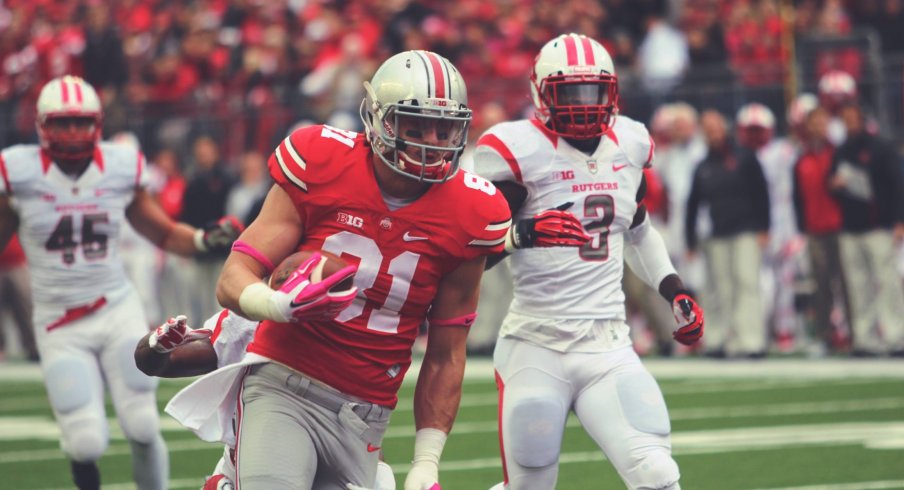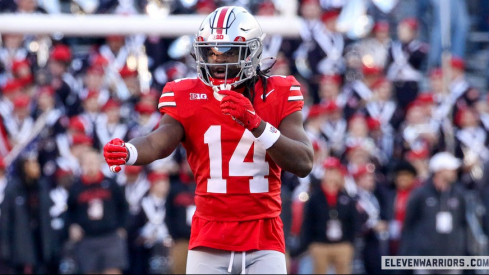Backup tight end isn't usually considered to be a "glamour" position, especially in the Big Ten.
Coming into the 2014 campaign, many expected senior tight end, Jeff Heuerman to be a critical part of the OSU passing attack after catching 26 passes for 466 yards in 2013, as well as lead a unit that lacked many upperclassmen. His backup, Nick Vannett, looked to only be a complimentary piece in the Buckeye offense, there just to spell the starter until freshman Marcus Baugh proved ready to contribute.
But unfortunately for Heuerman, a nagging foot injury has limited his playing time this fall, seeing him catch only five passes through six games. Vannett stepped in admirably during the first two contests, though often only contributing to the Ohio State passing game by blocking for other receivers.
After the week-two loss to Virginia Tech though, the Buckeye offense seemed to change course, encouraging quarterback J.T. Barrett to spread the ball around more, hitting the open receiver no matter their name. Not coincidentally, Vannett has begun seeing the ball more and more in that time, catching ten balls and finding the end zone three times in the four games since.
But he hasn't just been the beneficiary of defenses over-playing deep threats like Michael Thomas or Devin Smith, simply leaving him open underneath. Instead, Vannett has proven to be an outstanding route-runner, showing a great understanding of how to use his 6'6" frame to shield defenders and make plays in crowded areas.
Even as Heuerman has slowly worked his way back from injury, seeing more and more playing time each week, Vannett continues to see the field. Head coach Urban Meyer noted recently that the Buckeyes had begun to use both tight ends together quite a bit, believing the pair gives the offense a great deal of versatility.
Although he only had two catches against Rutgers, Vannett had perhaps his best showing yet in this expanded role, catching a pair of touchdowns that showcased his ability to beat coverages underneath.
On the sixth play of their opening drive, the Buckeyes lined up in a bunch formation split out with three receivers wide to the right, and a single receiver on the left.

From this alignment, the Buckeyes would call the "Snag" concept, requiring Vannett to run an inside-breaking route that looks like a slant, until he finds a soft spot in the defense to stop and sit. But as the Rutgers middle linebacker (#45) recognizes Vannett's route, the tight end feels the oncoming coverage and breaks his route back to the outside.
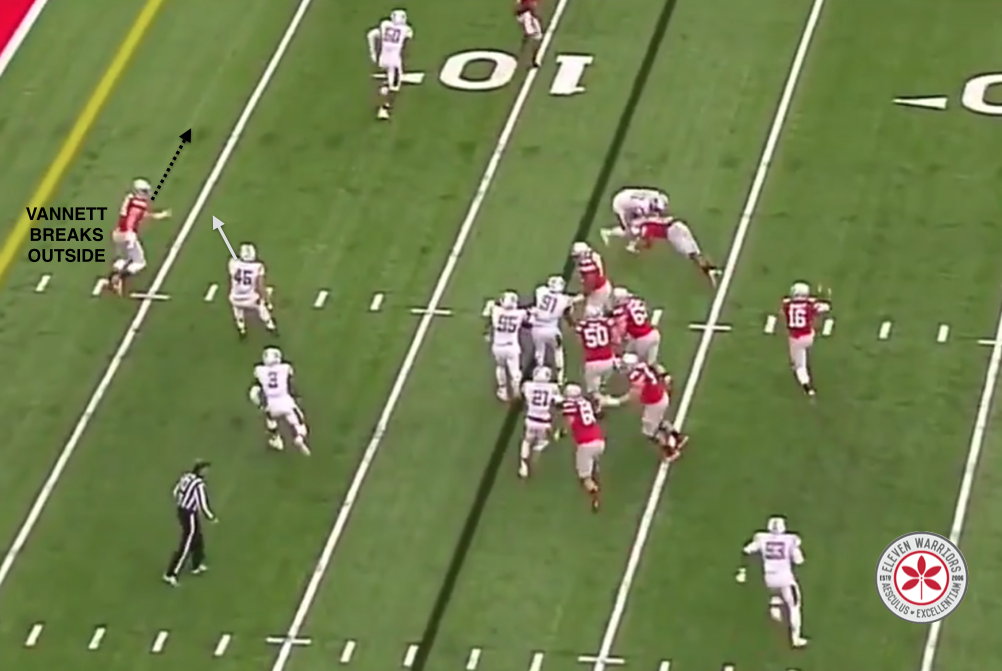
Instead of throwing a ball back across his body, Barrett is able to now hit Vannett in stride and lead the big receiver toward an open path to the end zone.

Vannett's adjustment on the route is a fairly simple one, and something that the play requires. But all too often, receivers at the college level wait until the defender is already there to make their break back outside.
In the second quarter, Vannett would show another bit of veteran route running during his second trip to the end zone. After coming in motion across the formation, Vannett would take an outside release as he ran an inside "seam" route when the Buckeyes called the "4 verticals" concept.
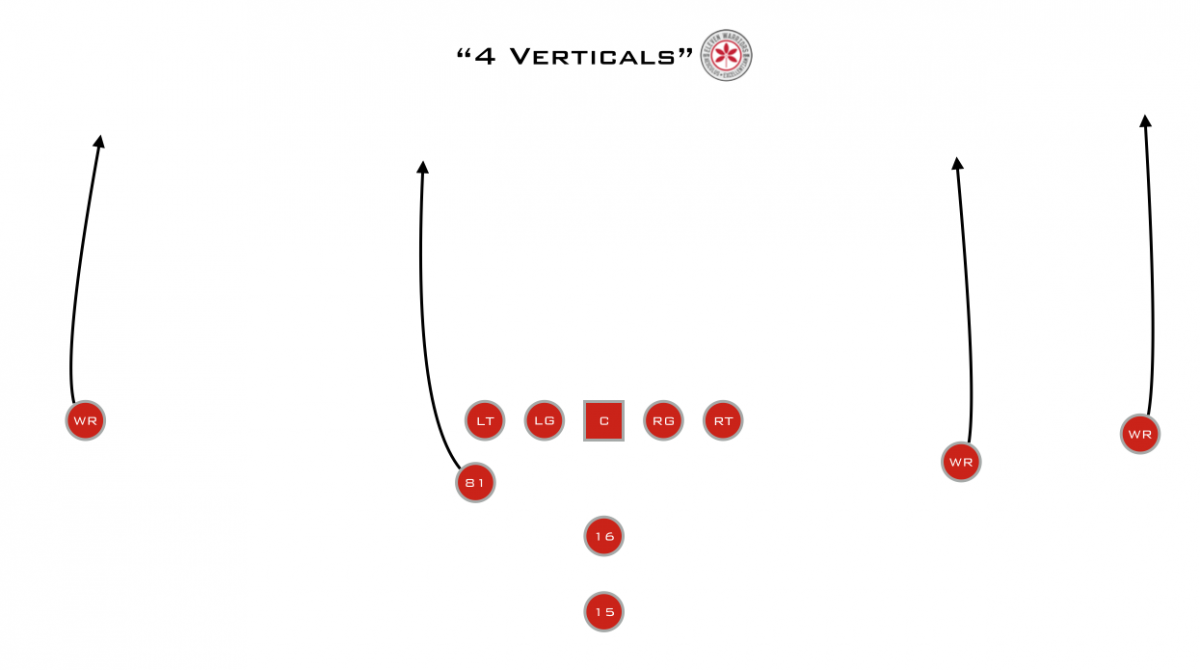
Just as the name implies, all four receivers run streaks straight downfield, creating a vertical stretch on the defense. But depending on the alignment of the defense, Vannett's route can become what some coaches call a "bender," meaning he can break to the inside, based on the position of the deep safety, but without making a hard cut.
After Vannett gets off the line quickly, the Rutgers linebacker (#3) has to turn his back to the quarterback in order to catch up. The defender can't read Barrett's eyes now, which allows Vannett to subtly change his route as needed.
With the deep safety to the side lined up straight ahead downfield, the tight end breaks inside, turning the linebacker around even more while running away from the safety.
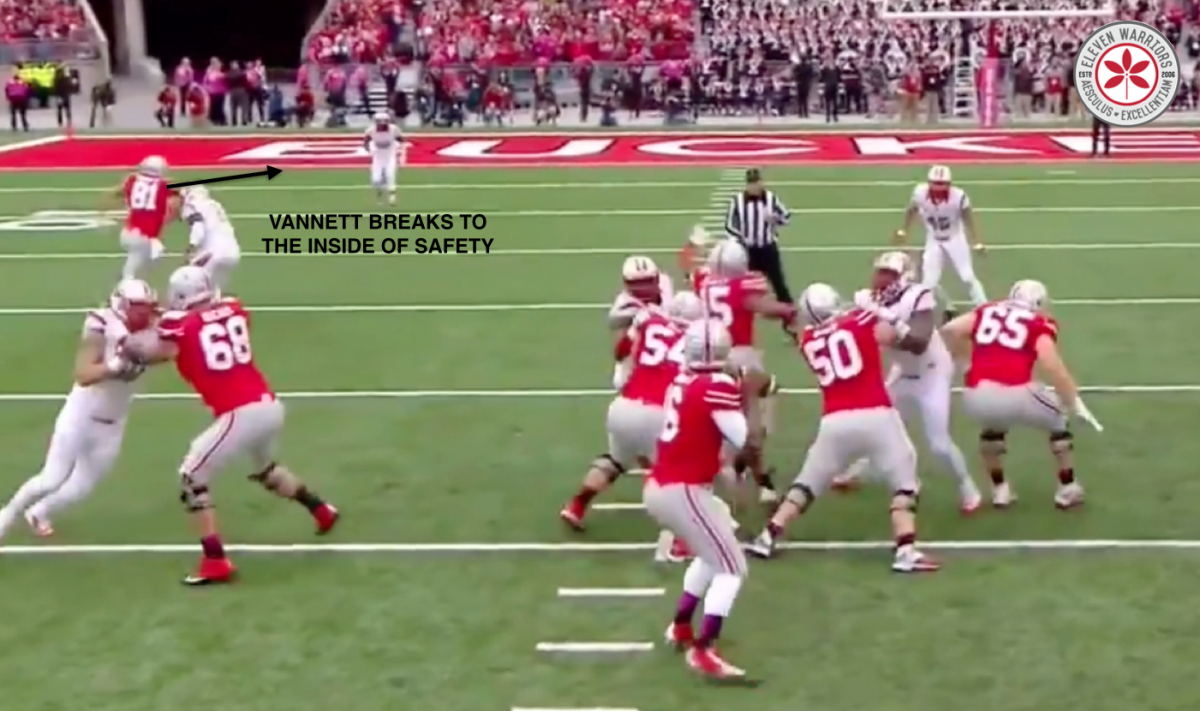
Not only does Vannett create distance from the safety, but he has now opened up his big frame more to Barrett, giving the QB a much larger target. Once again, the throw is on the money, allowing Vannett to easily get in the end zone from 26 yards out.

Understanding how to use their frame in such a manner is a major step in the development of a tight end. It's often said that you can't teach size, but OSU tight ends coach, Tim Hinton deserves a lot of credit for working with Vannett to get the most from his.
In fact, it appears that the Buckeye coaches now prefer using Vannett as the primary receiving tight end, asking Heuerman to exert more energy as a blocker. When the two appear on the field together, Vannett is often sent in motion or lined up in the slot, while Heuerman lines up on the end of the line in a traditional tight end position, a reversal of roles they often played in 2013. This change could very well could be due to Heuerman's physical limits while coming back from injury, but it still exhibits the faith that Meyer, Hinton, and the rest of the Buckeye coaches have in Vannett's abilities.
As the Ohio State offense continues its assault on scoreboard operators, the emergence of players like Vannett makes it more difficult for opponents to find a single, magic bullet to slow down the Buckeyes.
